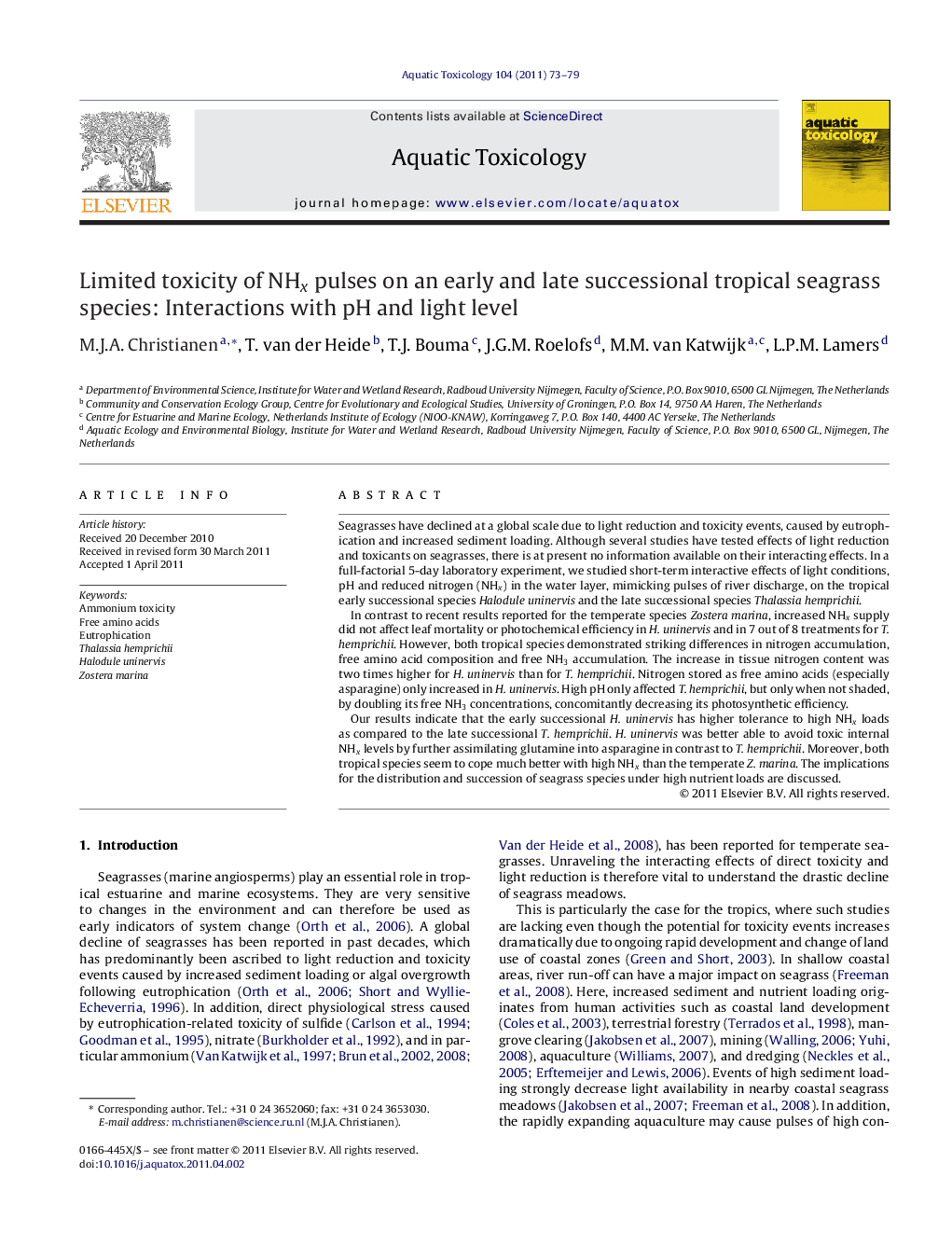| Article ID | Journal | Published Year | Pages | File Type |
|---|---|---|---|---|
| 4529891 | Aquatic Toxicology | 2011 | 7 Pages |
Abstract
Our results indicate that the early successional H. uninervis has higher tolerance to high NHx loads as compared to the late successional T. hemprichii. H. uninervis was better able to avoid toxic internal NHx levels by further assimilating glutamine into asparagine in contrast to T. hemprichii. Moreover, both tropical species seem to cope much better with high NHx than the temperate Z. marina. The implications for the distribution and succession of seagrass species under high nutrient loads are discussed.
Keywords
Related Topics
Life Sciences
Agricultural and Biological Sciences
Aquatic Science
Authors
M.J.A. Christianen, T. van der Heide, T.J. Bouma, J.G.M. Roelofs, M.M. van Katwijk, L.P.M. Lamers,
